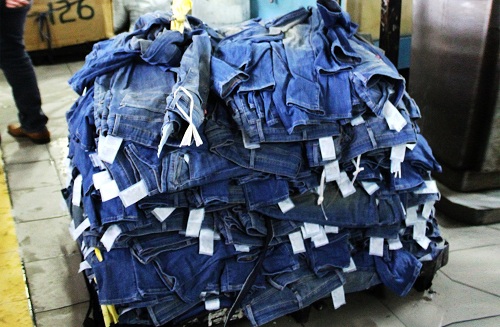SLOWING DOWN GROWTH CAN HELP FASHION BRANDS CURB OVERPRODUCTION, LABOR EXPLOITATION

SLOWING DOWN GROWTH CAN HELP FASHION BRANDS CURB OVERPRODUCTION, LABOR EXPLOITATION
Fast fashion production has doubled in the past 20 years ago, estimates a Business Insider report. The industry produces clothes equivalent to one garbage truck full of clothing waste in its single production cycle, says World Economic Forum. Notorious for its gross disregard for the environment, the industry contributes to high carbon emissions, water waste, and overall environmental pollution.
A reason for the industry’s complete disregard to the environment is the shortening lifecycles of clothing items. As a Remake report states, from 2000 to 2014, fashion purchases increased 60 per cent, of which almost 85 per cent ended in landfills. Indeed, the industry is encouraging consumers to donate excess clothes to environmental charities and funds for last few years. However, this does not completely address the problem of overproduction.
Mass production triggers unsustainable practices
One reason brands mass produce is to confirm to the latest fashion trends. They usually contract out designs to manufacturers for short-frame production. As per a 2011 study by the International Journal of e-Education, e-Business, e-Management and e-Learning (IJEEEE), fast fashion brands introduce new styles every five weeks. Zara launches 11,000 new clothes per year as opposed to 2,000-4,000 launched by other brands like H&M or GAP. The production cycle of fast fashion brands is often marked by unethical and unsustainable practices.
production. As per a 2011 study by the International Journal of e-Education, e-Business, e-Management and e-Learning (IJEEEE), fast fashion brands introduce new styles every five weeks. Zara launches 11,000 new clothes per year as opposed to 2,000-4,000 launched by other brands like H&M or GAP. The production cycle of fast fashion brands is often marked by unethical and unsustainable practices.
Most fast fashion brands enter short-term contracts with manufacturers for mass producing trend-based fashion items. Manufacturers, in turn, subcontract to ease the pressure of overproduction. They hire workers on low wages, with zero job security. A 2018 ILO report shows, most hired workers are verbally and physically abused for failing to meet production targets.
Addressing labor and environment violations
The targets for production are also grossly overestimated. A report by the Business of Fashion affirms, retailers often overbuy to maintain inventory flexibility. However, this leads to increased inventory-to-sales ratio. To get rid of excess inventory, brands either burn or shred their clothes, notes Timo Rissanen, Fashion and Textile Researcher. For instance, H&M is estimated to have burnt 60 tons of new and unsold clothes worth $4.3 billion in 2018. To bridge this gap between demand and over production, brands need to take the responsibility for ethical and environmental violations by suppliers. They need to tackle issues of both unethical labor practices and unsustainable environmental negligence.
The issue of overproduction plagues not just the fast fashion industry but also manufacturers of luxury clothing items. Luxury brands often place large orders to keep their inventories flexible and set trends. They burn off unsold clothes to retain brand exclusivity. For instance, Burberry is reported to have burnt clothes worth $26.8 million tons in 2018. The brand’s action sparked a debate on the need to relook the industrys and consumers approach to fashion. It also gave rise to the idea of degrowth or a planned reduction of product volume and slow consumption of clothing.
AI to target degrowth
Experts believe, degrowth can be used to increase sustainability in supply chain by applying trend analysis techniques with the help of AI technology. Degrowth strategy can help brands curb carbon emissions, water wastage, and environmental mismanagement within the production process itself. By implementing AI in design and manufacturing, brands can target overproduction issues. They can use automatic forecasting models to analyze mid-term sales and forecast future trends.
Consumers can adopt degrowth by extending their clothes lifecycle. They can also contribute to the shift towards green economy by buying more second-hand clothes. Advocacy campaign Remake’s also advocates degrowth as a consumer-endorsed business solution through its new campaign own #NoNewClothes pledge.
A critical aspect of sustainability, degrowth needs a purposeful shift to conscious supply and demand. Brands need to lower production volumes and follow slower time frames. They also need to enter into long-term contracts with manufacturers to provide increased job-security to workers.
By Fashionating World
https://www.fashionatingworld.com/new1-2/slowing-down-growth-can-help-fashion-brands-curb-overproduction-labor-exploitation
